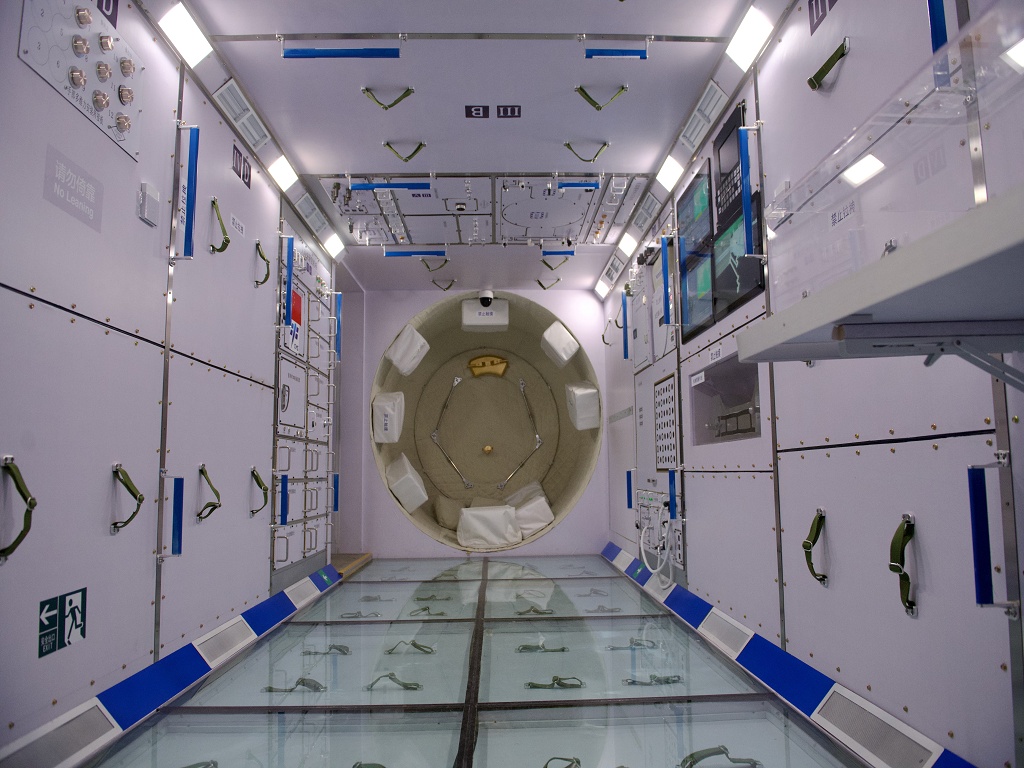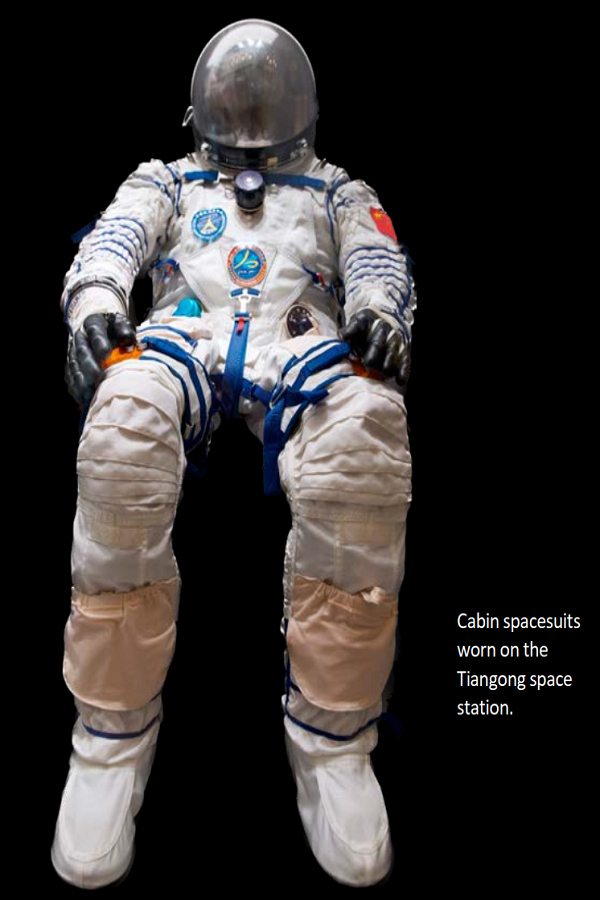Other Worldly Pursuits

As part of the “Tiangong Class” series of live teaching from space, Chinese space crew members demonstrated various experiments including cell growth under zero-gravity conditions and the first “fire in space,” which were popular with Chinese students and science fans. The videos also went viral on social media platforms like YouTube, delighting millions of space enthusiasts worldwide by sharing the ambitions of China’s manned spaceflight program.
China’s manned spaceflight program, officially launched in 1992, ended in 2022 with complete in-orbit construction of China’s space station Tiangong after 27 successful manned space missions. The program achieved a major leap from unmanned, short, and single-ship missions with intra-vehicular activity to manned, long, and complex operations featuring extra-vehicular activity. To mark 30 years of the program, an exhibition is on display at the National Museum of China in Beijing.
The museum’s central hall is dominated by a marvelous 1:4 model of the Tiangong space station and a full-size replica of the Tianhe core module.

China launched Tiangong’s Tianhe core module in April 2021 and then launched the Wentian and Mengtian segments as laboratory cabin modules in July and October 2022, respectively. Mengtian’s attachment wrapped up the space station’s assembly phase. Tiangong can be monitored via its “twin brother”—a digital “space station”—on the ground, to ensure safe and stable in-orbit operations for the long term.
As the management and control center of the space station, the Tianhe core module is also the crew module where astronauts live and work. Visitors can even see details such as astronauts’ sleeping bags and the food in the dining area in the replica of the Tianhe core module.
The most amazing thing about space stations is the ability to sustain human life. A special exhibition area was set up to demystify the secrets of a complex system featuring regenerative environmental control and health supports, with exhibits designed to explain processes like removing carbon dioxide and harmful trace gases. The system helps recycling of in-orbit environmental resources including the regeneration of water and oxygen as well as the collection, concentration, and reduction of carbon dioxide.

What exactly happens in a space station? The exhibits in the space application exhibition area offer some answers. The Tiangong space station now offers 16 cabinets for scientific experiments. There, astronauts can explore the activities of cosmic particles and decode how the growth of plants in space differs from that on the earth. Devices in the cabinets can be switched out according to various research goals and objectives. Thousands of project applications are expected.
Many key devices have double or even triple backups to ensure the safe and stable operation and maintainability of the space station. For example, astronauts can replace any single in-orbit module without affecting missions performed in the three-module space station.

During the exhibition, China’s blueprint for human lunar exploration was also unveiled. It aims to send three astronauts into the lunar orbit and two to land on the moon. Plans are underway for a lunar probe and sample return that will involve collaboration between humans and machines. Models of major vehicles for China’s future manned missions to the moon debuted to the public at the exhibition, including a moon lander and next-generation manned spacecraft.
The development of carrier rockets is an integral part of China’s manned spaceflight program. A scale-down model of the Long March-10 rocket is on display. The new-generation launcher will be used to bring 27-ton payloads, including the lunar lander and moon craft, into the earth-moon transfer orbit. The rocket, measuring 88.5 meters in height and powered by liquid hydrogen, liquid oxygen, and kerosene, will have a liftoff thrust of about 2,678 tons, three times more than the Long March-5B carrier rocket, according to its chief designer Zhang Zhi from the China Academy of Launch Vehicle Technology. Currently, the Long March-5B is China’s most powerful heavy-lift launch vehicle, once responsible for transporting the core module and two lab modules to the Tiangong space station.
“We hope the exhibition will spread our passion for the cause to more people,” said Hao Chun, director of the China Manned Space Agency, at the opening ceremony of the exhibition. “And now in the new era, Chinese people will explore even further into space and contribute to all humankind with our quest.”